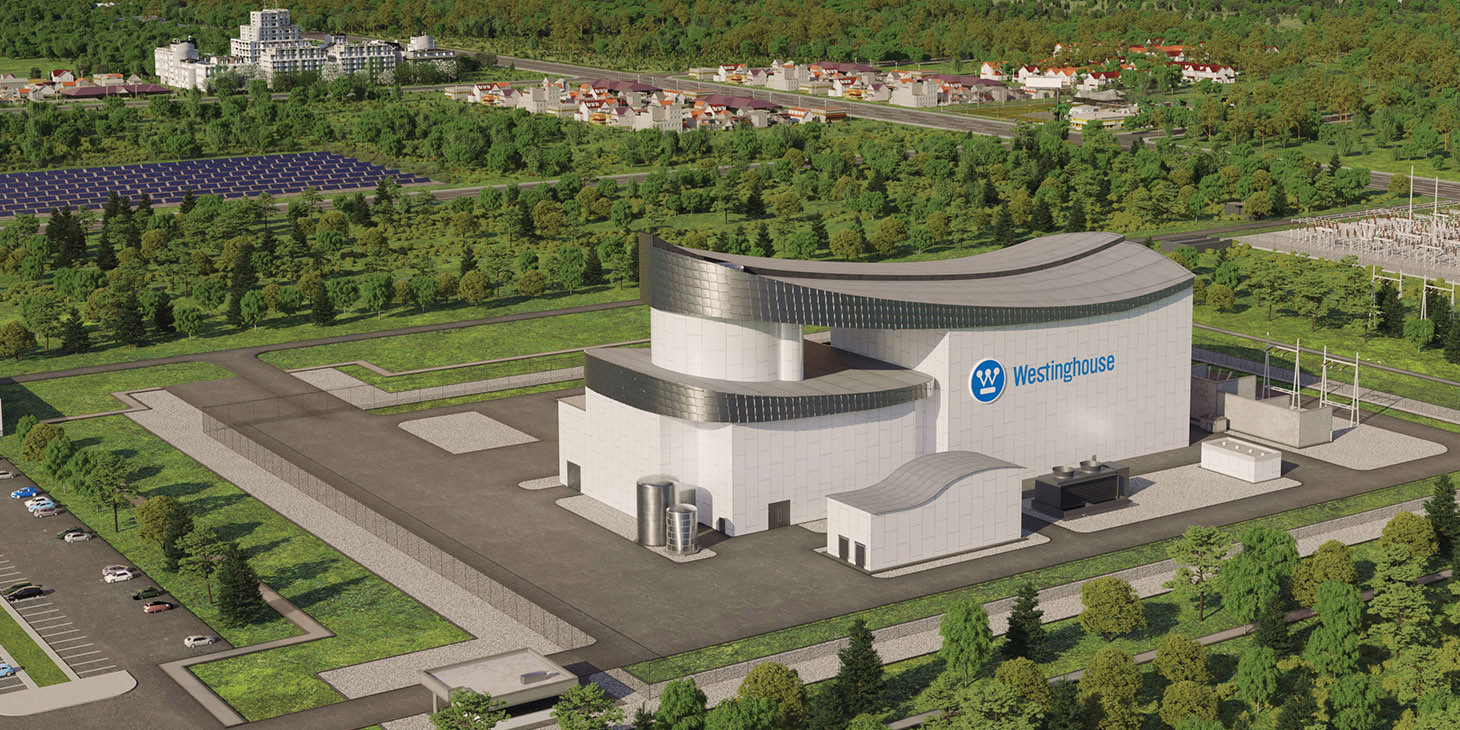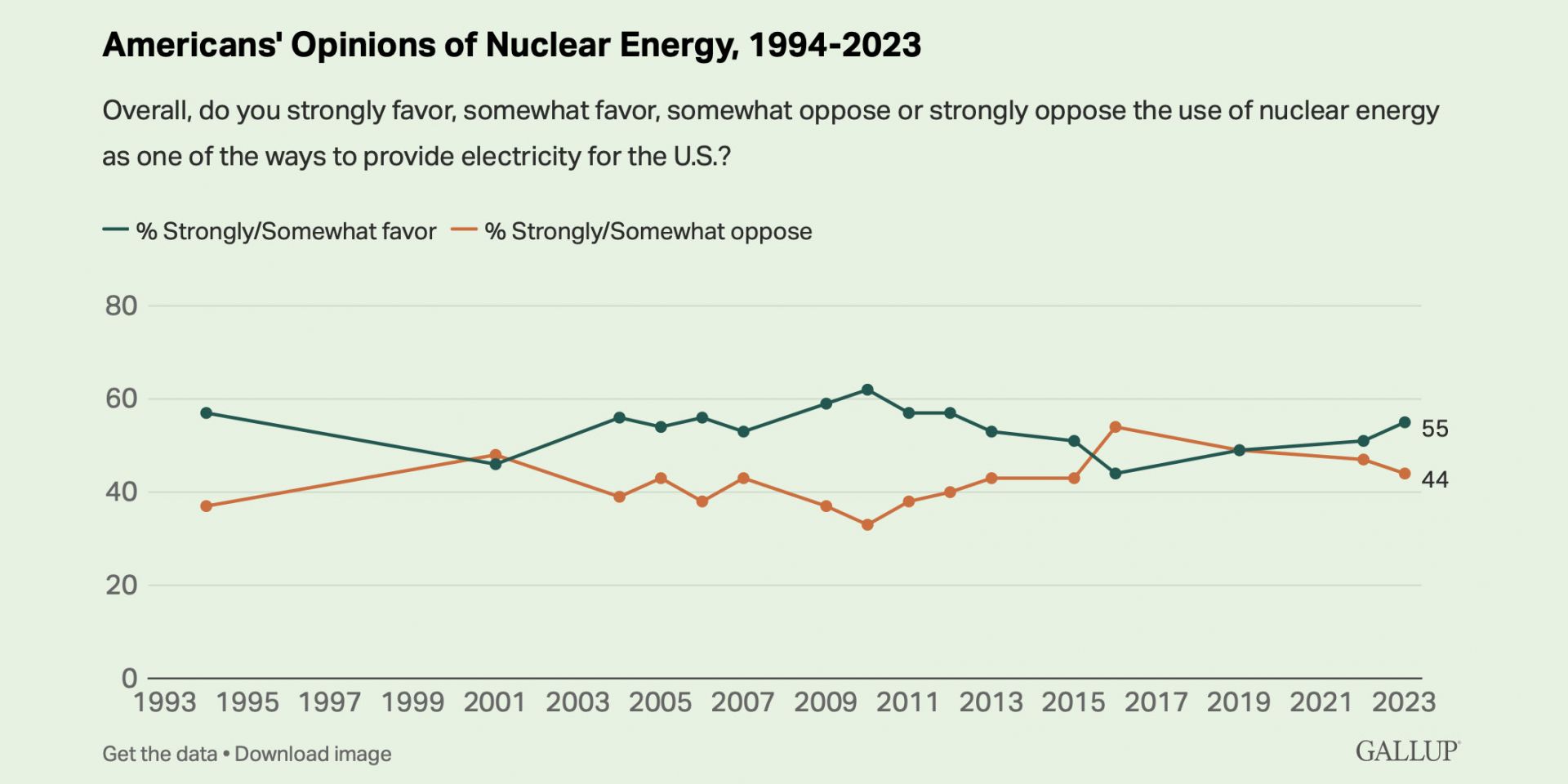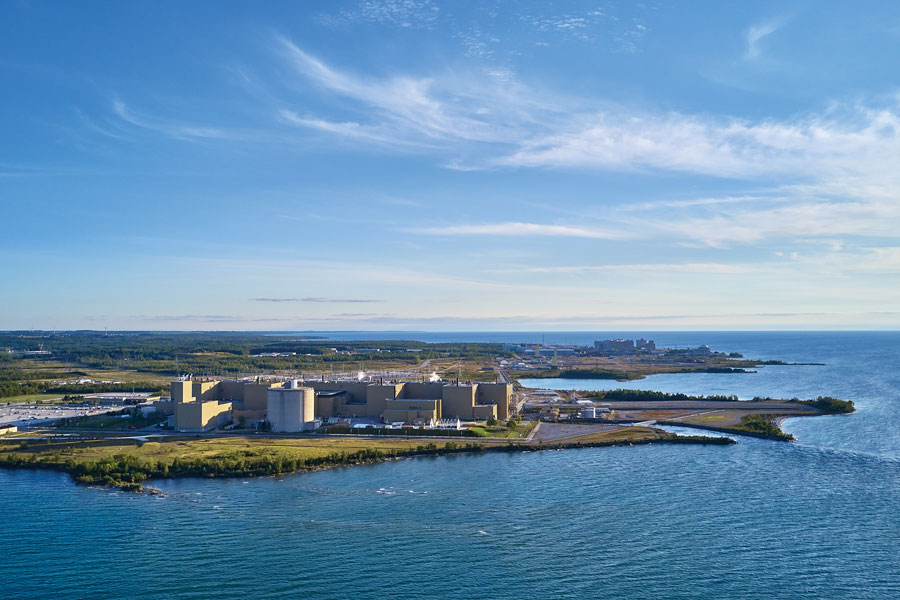Rendering of a Westinghouse AP300 plant. (Image: Westinghouse)
At a virtual press conference this morning, Westinghouse Electric Company president and chief executive officer Patrick Fragman announced the launch of the AP300 small modular reactor, a 300-MWe, 900-MWth single-loop pressurized water reactor based on the company’s larger AP1000 unit. Fragman was joined at the conference by David Durham, president of energy systems for Westinghouse, and Rita Baranwal, the firm’s chief technology officer. The company also released a short video introducing the AP300 on YouTube.
The Vogtle-4 turbine building in March. (Photo: Georgia Power)
Georgia Power has announced another key milestone for the Vogtle nuclear expansion project near Waynesboro, Ga.—the completion of hot functional testing at Unit 4. This achievement marks another significant step toward commercial operation for the Generation III+ AP1000 reactor, which is projected to enter service late in the fourth quarter 2023 or in the first quarter 2024.
Joo Han-Gyu, KAERI president, on teleconference with Albertan ministers Brian Jean and Rajan Sawhney during the signing of the MOU. (Photo: KAERI)
The Korea Atomic Energy Research Institute (KAERI) and the government of Alberta have agreed on a comprehensive cooperation framework to explore the viability of using small modular reactors to help decarbonize the province—Canada’s biggest energy producer and its biggest polluter. The announcement comes the same week that Alberta’s United Conservative Party government released a climate plan aimed at reaching net zero by 2050.
A rendition of Terrestrial Energy’s IMSR. (Image: NRC)
The Canadian Nuclear Safety Commission (CNSC) has completed phase two of its prelicensing vendor design review for Terrestrial Energy’s Integral Molten Salt Reactor (IMSR), the Ontario-based advanced nuclear technology firm announced Tuesday. Phase one of the VDR commenced in April 2016 and was completed in November of the following year.
Representatives of six nuclear organizations sign a declaration in Sapporo, Japan. Seated, left to right, are George Christidis (representing CNA chief executive officer John Gorman), Shiro Arai, Maria Korsnick, Tom Greatrex, Yves Desbazeille, and Sama Bilbao y León. (Photo: World Nuclear Association)
G7 governments should support life extension for today’s power reactor fleet, restart operable units, and accelerate the deployment of advanced reactors, states a joint declaration issued April 16 at the Nuclear Energy Forum, a first-of-its-kind colloquy held on the margins of the G7 Ministers’ Meeting on Climate, Energy and Environment in Sapporo, Japan.
The Neckarwestheim nuclear power plant in Germany.
Ignoring a last-minute plea from a long list of scientific luminaries (including Nobel laureate Steven Chu and climate scientist James Hansen) to reconsider, as well as recent polls showing pronuclear sentiment among a majority of its population, Germany shut down its last three operating nuclear power plants late Saturday, ending 60-plus years of electricity generation from fission. (Germany’s first nuclear power plant, Kahl, was commissioned in 1961 and closed in 1985.)
Rendering of a Rolls-Royce SMR plant. (Image: Rolls-Royce SMR)
The United Kingdom’s nuclear regulators—the Office for Nuclear Regulation (ONR), the Environment Agency, and Natural Resources Wales (NRW)—have announced the completion of step one of their generic design assessment (GDA) for Rolls-Royce SMR’s 470-MWe small modular reactor design and the start of step two, which is expected to last 16 months.
The Bruce nuclear power plant. (Photo: Bruce Power)
Canada’s Bruce Power, operator of Ontario’s eight-unit Bruce nuclear power plant, has announced the issuance of C$600 million (about $446.3 million) in green bonds in support of the company’s net-zero-by-2027 goal. (Investopedia defines green bonds as fixed-income instruments specifically earmarked to raise money for environmentally friendly projects.)
Vogtle Units 3 and 4 in February. (Photo: Georgia Power)
Unit 3 at the Vogtle nuclear power plant has been successfully synchronized and connected to the electric grid, Georgia Power announced on April 1. The unit—one of two Westinghouse-supplied AP1000s at the Waynesboro, Ga., plant’s nuclear expansion site—becomes the first new U.S. power reactor to start up in seven years.
















